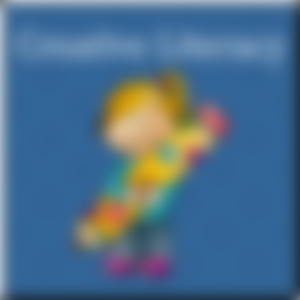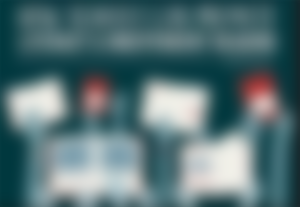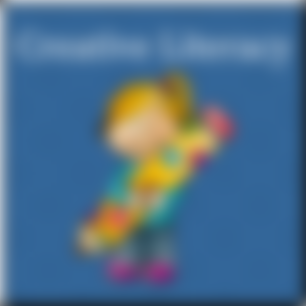
Finally, the last day of my writing on various types of literacy has arrived (I hope I haven't bored you much). Finally, I will write to you about one type of literacy that I believe has contributed the most to the development of the whole human society.
Creative literacy

Creativity is, according to an old saying, the last resource that the human race has; what we do when we don't know what to do. Creativity is the closest thing to magic in our individual and collective action. It creates new industries, new perspectives, new inspirations, new resources and new ways to solve problems. And yet - as many activists fighting for education reform point out - something strange and tragic is happening to this vital force in our lives.
Several years ago, NASA developed a special creativity test for its scientists, and then, out of pure curiosity, they decided to use it to test 1,600 school children, ages 4 and 5. The results were astonishing: 98% of the children on the test were in the ‘genius’ category in terms of creativity. When the test was repeated with the same children five years later, the percentage dropped to 30%, and by the time the children turned fifteen, to only 12%! The same children, tested as adults, barely reached 2% of the level of creative genius. The conclusion was that the school, as we know it today, systematically destroys creativity, our natural state, the superpower we are born with and have until the relentless press of industrial education and the modern business environment drains us.
Creativity is ‘new’ and ‘different’ by definition, deviating from norms, disagreement, change, shock, undermining the sameness - all that most of our official environments try to avoid at all costs! We, as creative beings, have managed to make the mother of all paradoxes: to build a civilization that treats its basic and most magical trait as an enemy, as a hindrance, as a disease that is exterminated by processes, measurements, systemic norms and customs that punish diversity. The new education system needs a new ideology not only of acceptance, but also of active celebration of ‘neuronetypicality’, eccentricity, radicalism and counter-racialism of all kinds - provided it does not jeopardize the security and personal integrity of others, of course. (And I use these words here in their basic, not symbolic or status sense). This, due to the nature of current education systems, will probably be the most difficult literacy to develop and implement, for two reasons.
The first is what I mentioned at the very beginning of my study on various types of literacy: the structure of the system itself, which is based on standardization and mass averaging. Teacher training, the ways in which both their and students' success are assessed, the daily structure of activities - everything is in fundamental antagonism towards creativity. Another reason is the lack of understanding and non-acceptance of the very ideology of creativity by the competent ministries and their political systems. Our biggest collective, civilizational, problem is that the planet is ruled by a cabal of fundamentally uncreative and unimaginative people. Exceptions are extremely rare and only put others in even stronger contrast.

An educational program for these new types of literacy already exists. Literature and methodologies, too. No one can say that we do not know how we would do this new enlightenment project. There are even many successful individual examples, not only in Finland. What is really missing is the systemic will to even try. The challenge to the ‘status quo’ is simply too great.
I wonder why? Namely, all these types of literacy can easily be found in various branches of the economy, with large investments in their creation and development. Advertising, political propaganda, sales and entire entertainment industries make big money through archetypal storytelling, impulse stimulation tactics, ‘hacking’ attention, super-rational organization of expert teams and intensive use of data and statistics. Various consumer industries are immersed in creativity. They all understand very well how human nature and our cognitive ‘shortcuts’ work, and then they turned that knowledge into a weapon against us. Sometimes that creativity is used to develop ideas that realistically improve the way we live our lives. But I can't resist the impression - that for the most part this creativity is being used against us, in an ideological system that puts profit above people and above the planet.
These ‘human sciences as weapons’ have created an invisible methodology, a ‘black operations’ type of thinking that pushes various hidden interests under the radar of our attention and our understanding. Literating the population in these ways would fundamentally change existing power games, our perceptions of reality and priorities in life, the political and economic systems we believe in (or only support for various human reasons, even if we don’t believe in them).
That vicious circle, however, must at least weaken, if not break, if we care about ourselves, on this grain of dust called planet Earth



Children are very creative, starting from preschool age, but also earlier. I remember how my cousin taught me to draw, I am an anti-talent for drawing, but the child showed me how to gain a sense of drawing with incredible methods. I still keep some of his drawings today, and the question is whether an old man like this could draw me better now than he did when he drew those drawings as a child.